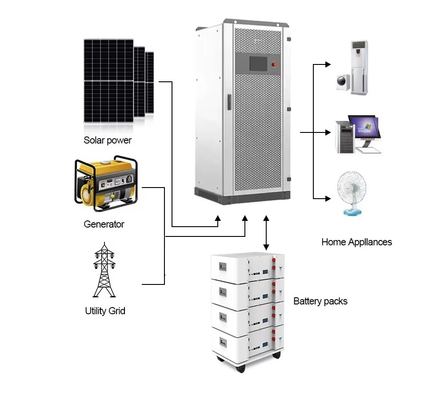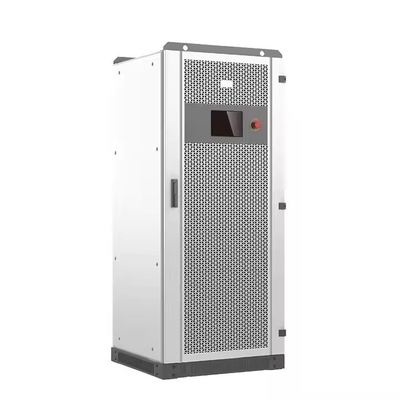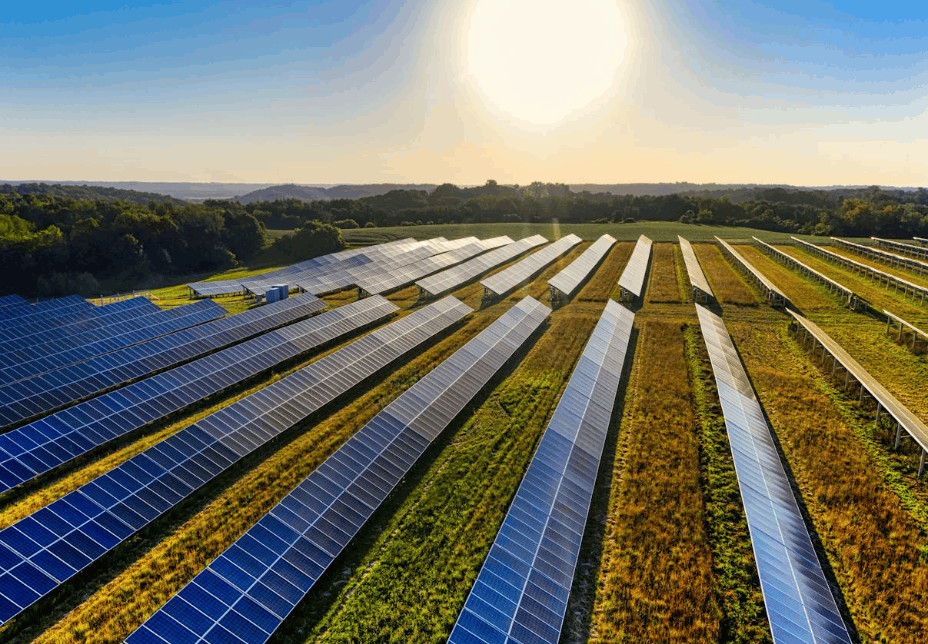Industrial-Grade Power Conversion for Demanding Environments
This 30kW three-phase hybrid inverter represents a robust energy solution engineered for remote and mission-critical applications where grid reliability is unavailable. By integrating solar power conversion, battery storage, and generator support into a single unified system, it eliminates the need for separate components while delivering exceptional operational flexibility.
Key Features & Benefits
1. High-Efficiency Energy Conversion
30kW continuous output (33kVA peak)
-
Capable of powering industrial machinery, telecom base stations, and off-grid communities with stable three-phase power. The 10% overload capacity (33kVA) handles motor startups and surge loads without voltage fluctuations.
Dual MPPT inputs (1,000V max PV voltage)
<3% total harmonic distortion (THD)
-
Produces utility-grade power quality that safely operates sensitive medical equipment, laboratory instruments, and variable-frequency drives. Active harmonic filtering technology prevents damage to connected devices.
2. Advanced Battery Management
250-850V battery voltage compatibility
36kW maximum charging power
CAN/RS485 BMS communication
3. Military-Grade Reliability
-30°C to 55°C operational range
IP20-rated enclosure
110% continuous overload capacity
4. Intelligent Grid Integration
Automatic generator synchronization
Parallel operation support
TCP/IP remote monitoring
Technical Specifications
| Category |
Parameter |
Value |
Technical Significance |
| AC Output |
Rated Power |
30kW |
Powers small factories or 20-30 households |
| |
Peak Power |
33kW |
Handles intermittent heavy loads |
| PV Input |
Max. Voltage |
1,000V |
Future-proof for 1500V systems |
| |
MPPT Range |
250-850V |
Compatible with most commercial panels |
| Battery |
Voltage Range |
250-850V |
Eliminates DC-DC converters |
| |
Max. Charge Current |
36kW |
2-hour charge for 200kWh bank |
| Physical |
Dimensions (W×D×H) |
800×800×1,900mm |
Fits standard equipment rooms |
| |
Weight |
620-650kg |
Requires forklift installation |
| Environmental |
Operating Temperature |
-30°C to 55°C |
Arctic to desert operation |
| |
Cooling Method |
Forced air |
55dB noise at full load |
Certifications & Compliance
-
IEC 62109-1: Certified protection against electrical hazards including arc faults and ground faults.
-
VDE-AR-N 4105: Complies with German grid standards for voltage/frequency regulation.
-
EN 61000-6-4: Meets industrial electromagnetic compatibility requirements.
Implementation Guidelines
-
Installation
-
Foundation must support 800kg dynamic loads
-
Minimum 500mm clearance for airflow
-
95mm² copper cables required for battery connections
-
Maintenance
-
Typical ROI

 Your message must be between 20-3,000 characters!
Your message must be between 20-3,000 characters! Please check your E-mail!
Please check your E-mail!  Your message must be between 20-3,000 characters!
Your message must be between 20-3,000 characters! Please check your E-mail!
Please check your E-mail! 










